Last Updated on March 15, 2025
Wondering if those weeds with pink flowers are good for anything? Here’s what to know about identifying these common wild plants, which ones are edible and which are poisonous, plus how to use the tastier ones.
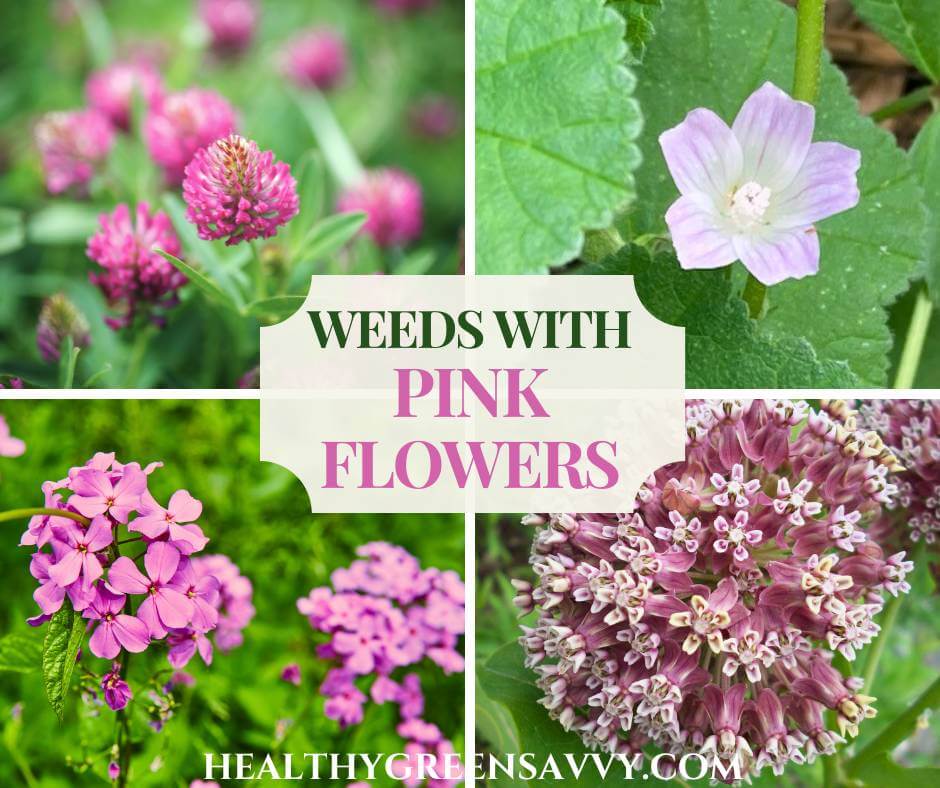
- 'WEEDS' VS WILD PLANTS
- FORAGING WILD PLANTS
- WHICH WEEDS WITH PINK FLOWERS ARE EDIBLE OR MEDICINAL?
- SELF HEAL (PRUNELLA VULGARIS)
- LADY'S THUMB (PERSICARIA MACULOSA)
- RED CLOVER (TRIFOLIUM PRATENSE)
- MILKWEED (ASCLEPIAS SYRIACA)
- COMMON MALLOW (MALVA NEGLECTA)
- DAMES ROCKET (HESPERIS MATRONALIS)
- VIRGINIA WATERLEAF (HYDROPHYLLUM VIRGINIANUM)
- JOE PYE WEED (EUTROCHIUM MACULATUM)
- CRANESBILL/WILD GERANIUM (GERANIUM MACULATUM)
- COMMON VETCH (VICIA SATIVA)
- NOT SAFE TO CONSUME
‘WEEDS’ VS WILD PLANTS
If you’ve got a yard or garden, you’ve surely spotted some weeds with pink flowers and wondered if you shouls keep or yank them.
Of course, the name ‘weed’ applied to plants we find in our gardens can be a little misleading. One person’s hated weed is the herbalist’s favorite herb. Here we’re using the word weed to refer to plants that tend to grow wild rather than planted by gardeners on purpose, aside from those who appreciate their medicinal value and happily plant them. 🙂
Many of these pink flowered weeds are in fact very useful medicinal plants, and some have benefits for your garden as well. You might also explore the many weeds with purple flowers that often grow in home gardens.
Before you pull tasty edible wild herbs, you might give them a chance at your next meal. Over the years I’ve come to treasure numerous edible weeds I’ve discovered in my garden as bonus garden crops, including wild violets, dandelions, purslane, and lambs quarters (aka wild spinach).
The more I learn about herbalism and wild plants, the more I’m persuaded that we should all explore the wild plants growing around us for supporting health. Over the years I’ve come to embrace the power of ground ivy (aka creeping Charlie) and pine needle tea for making me feel better when I have a cold and yarrow for stopping bleeding.
Get to know the wild plants around you, and see how you might be using them to support your own health. Rosalee de la Forêt and Emily Han wrote a wonderful book called Wild Remedies that will inspire you to put these plant allies to work in your home apothecary.
Here are lots more herbalism books to explore.
FORAGING WILD PLANTS
The first rule of foraging is always to be absolutely sure you’ve positively identified any wild plant you intend to consume. While many weeds with pink flowers are edible or medicinal, others are not and may make you very sick.
That’s why you need a thorough and trustworthy foraging guide. THE best foraging book I’ve found is Sam Thayer’s new Field Guide to Edible Wild Plants. It’s incredibly comprehensive (and entertaining), but it’s also rather heavy because it covers so many plants. You might want some additional foraging books that include fewer plants but are easier to take with you on foraging expeditions.
IMPORTANT: This post will not include detailed plant identification, as it’s already quite long! Be sure to do your homework and read carefully about how to identify these plants before harvesting and consuming them. Some have toxic look alikes you need to learn to recognize.
Here’s what to know about which weeds with pink flowers you might want to encourage or harvest and which you might want to try to get rid of.
WHICH WEEDS WITH PINK FLOWERS ARE EDIBLE OR MEDICINAL?
Several of the common weeds with pink flowers you might find in your garden are quite tasty and medicinally useful. I’ll order them according to what I’ve found as their potential value.
SELF HEAL (PRUNELLA VULGARIS)
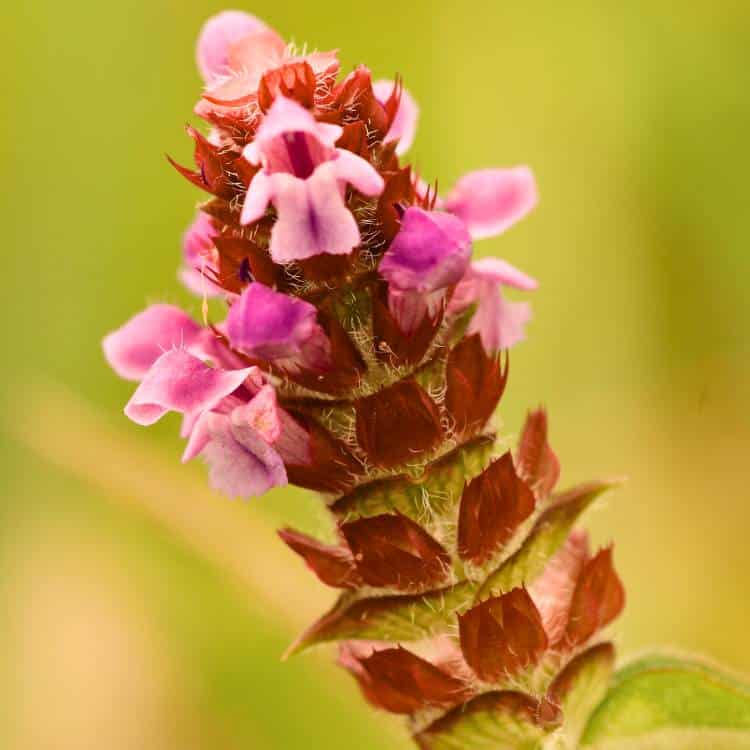
My top pick of the pink-flowered weeds is hands-down self heal.
Self heal (also called heal all), may be one of the most useful weeds you’ll find. Beloved by herbalists, self heal is a go-to herb for fighting viruses and healing wounds.
Self heal is a member of the mint family, and is an excellent cooling herb for addressing both internal and external heat. As its name implies, it’s been found to be useful for a great number of complaints, especially wound care, sore throats, and viral illnesses.
Self heal is a great wild plant to know for outdoor first aid, as it can be very useful as a poultice for wounds.
It’s used in traditional Chinese medicine (TCM) to address a number of issues, including eye swelling and pain, headache and supporting liver health.
Some self heal has flowers that are more pink, while others have more purple flowers. It’s one of the many great options if you’re thinking of planting a flowering lawn for pollinators.
If you’re less interested in using wild plants medicinally and more looking for tasty wild edibles, Sam Thayer suggests skipping self-heal, which he writes “is among the poorer leafy greens…only worth mentioning as food because it is so ubiquitous. To be worth eating, the leaves must be collected at their tenderest, from the top of robust stems in spring.” He suggests boiling leaves and draining once before cooking again.
Check out 25 edible wild greens that are more worth your time and effort if that’s what you’re after.
LADY’S THUMB (PERSICARIA MACULOSA)
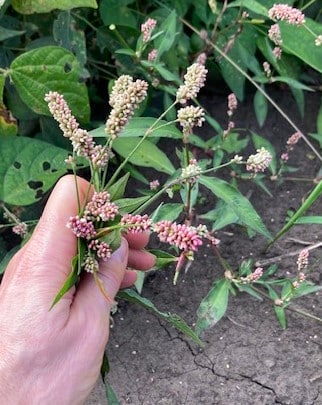
I learned about lady’s thumb from a wonderful local herbalist, LuAnn Raadt, who shares herbal wisdom at the fantastic medicinal herb garden she grows at our CSA, Open Hands Farm. She extols lady’s thumb’s virtues every chance she gets, and one day hopefully will write us a post about it! (hint, hint LuAnn) 😉
She has TONS of useful herbal information on her website, which you can peruse here.
A little-known medicinal weed, this cool-looking member of the ‘smartweed‘ family is rich in mucilage, making it useful for dryness, whether in mucous membranes or in the digestive system. It’s also considered useful for food sensitivities.
You can use its leaves as a cooked or raw green, or brew a very neutral-tasting mucilage-rich tea from it, together with the flowers. The seeds have a bit more peppery flavor. Green Dean from Eat The Weeds reports that some varieties have leaves with peppery flavor as well.
RED CLOVER (TRIFOLIUM PRATENSE)
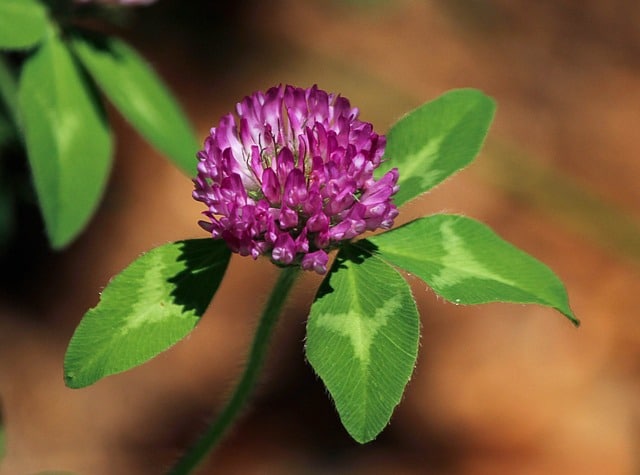
Yes, the name is ‘red’ clover, but in fact this useful plant has flowers that are much closer to pink. Red clover blossoms have a pleasant sweet flavor, are rich in minerals, and are often used medicinally. They’re considered especially useful for helping with menopause symptoms but have many other traditional uses including coughs, cramps, sore throats, and skin issues.
Other edible clovers have flowers you might want to use medicinally as well.
MILKWEED (ASCLEPIAS SYRIACA)
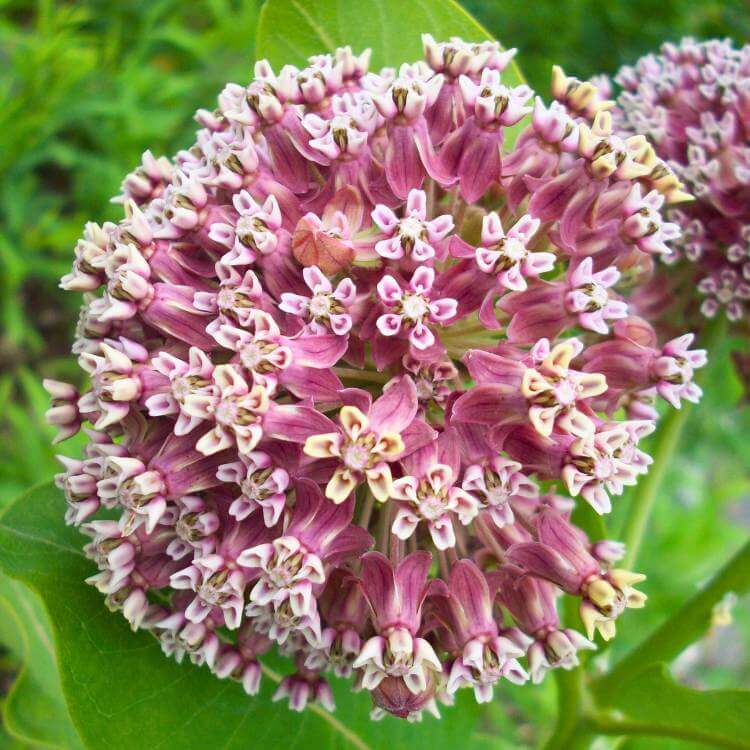
You’ve probably come across milkweed, that beloved food source for monarch butterflies. Maybe you’ve spotted it growing in neighbors’ yards, where they carefully mow around it to preserve it for monarchs passing through on their annual migrations.
What you might not have realized is that milkweed is a top plant for foraging, as it offers multiple opportunities for delicious wild food. The early shoots are considered comparable to but tastier than green beans or asparagus, the leaves, flower buds, and unripe pods are also considered tasty vegetables, and the incredibly fragrant pink flowers can be eaten as well.
Because of milkweed’s importance for monarchs, many people believe that eating milkweed is taking food away from this endangered species. However, as Sam Thayer explain in this video, harvesting milkweed at different times actually helps maintain milkweed patches in peak condition for monarchs.
Though it has “weed” in its name, milkweed is a native wildflower, not an invasive species. There are over 100 species in North America, so do your research on edibility before digging in to the milkweed growing in your area.
COMMON MALLOW (MALVA NEGLECTA)
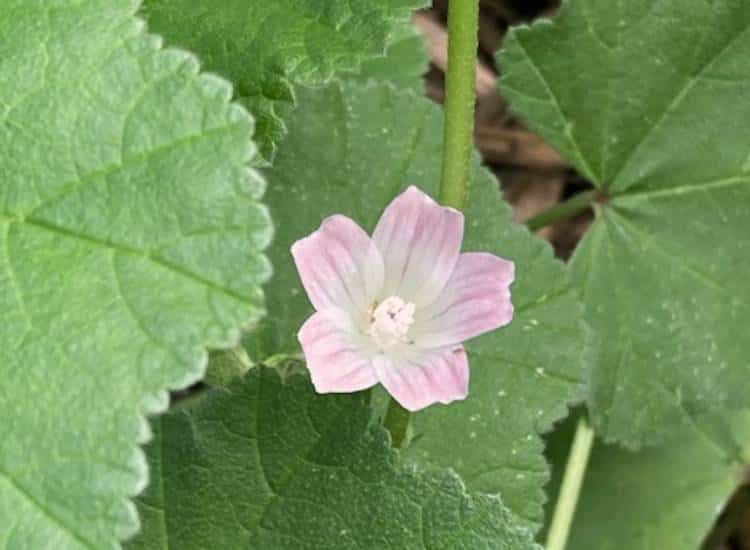
Common mallow isn’t the best edible wild plant you’ll find, but it’s also far from the worst.
Though I do get a decent number of mallow plants each season, they’re not aggressive and I let them be. Their pretty pink flowers are attractive additions to the garden, and their adorable ‘cheeses’ are fun to look for toward the end of the season.
The leaves are a good source of mucilage and are used as a cooked green.
Here’s more identifying mallow if you think it might be one of the weeds with pink flowers in your garden.
Note: The plants below have more aggressive/invasive tendencies, so if you find some in your garden, you might want to control them. Consider pulling out the whole plant when you forage if you want to keep them from taking over.
DAMES ROCKET (HESPERIS MATRONALIS)
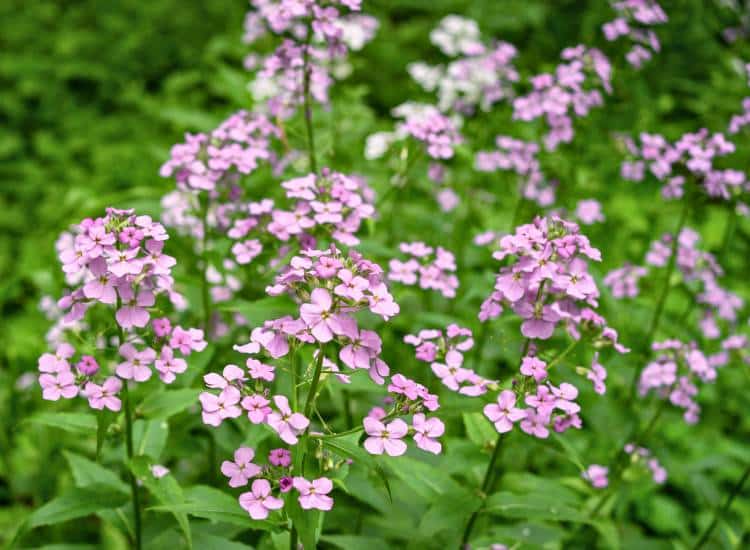
Dames rocket can have pink, white, or purple flowers and is often confused with phlox. You can tell dames rocket from phlox by counting the flower petals. Dames rocket flowers have 4 petals, while phlox flowers have 5.
Its name ‘rocket’ points to its lineage. This relative of arugula — which is often known as ‘rocket’ from the French roquett — has tasty young leaves with a very similar flavor.
The edible have a pleasant mild flavor and make a lovely addition to salads. I often just munch on them plain when I’m out in the garden. There are scores more flowers you can eat to explore if you’re curious.
Dame’s rocket is considered invasive, but I’ve had just a plant or two growing in the same place for years without trying to spread anywhere in the garden, unlike the very aggressive and weedy cranesbill and Virginia waterleaf, described below.
VIRGINIA WATERLEAF (HYDROPHYLLUM VIRGINIANUM)
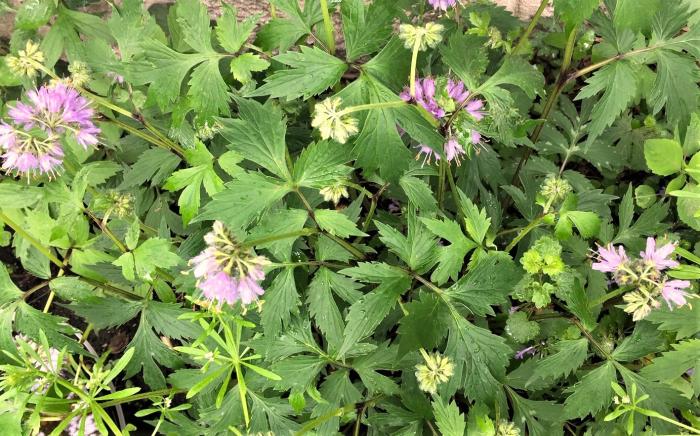
While considered a native plant as well as having some decent edible uses, I need to warn you about Virginia waterleaf’s highly aggressive nature. Because I want a diverse garden filled with many useful plants (not just one!), I pull as much Virginia waterleaf as I can each season to prevent it from being the only plant I grow. No matter how much I dig up, there’s always plentiful new plants each season.
It does have its uses, primarily as the first of the edible wild greens one can find in early spring. I’m always amazed at how large these plants get before most others have even sent up their first shoots each season.
Virgina waterleaf is a mild-tasting green that you can use in cooked dishes, and some consider the flower buds a delicacy.
Even if you don’t pull all the plants, I highly recommend cutting back the flowers before they set seed to save yourself the work of pulling even more plants in the future.
Learn more about identifying and using Virginia waterleaf.
JOE PYE WEED (EUTROCHIUM MACULATUM)
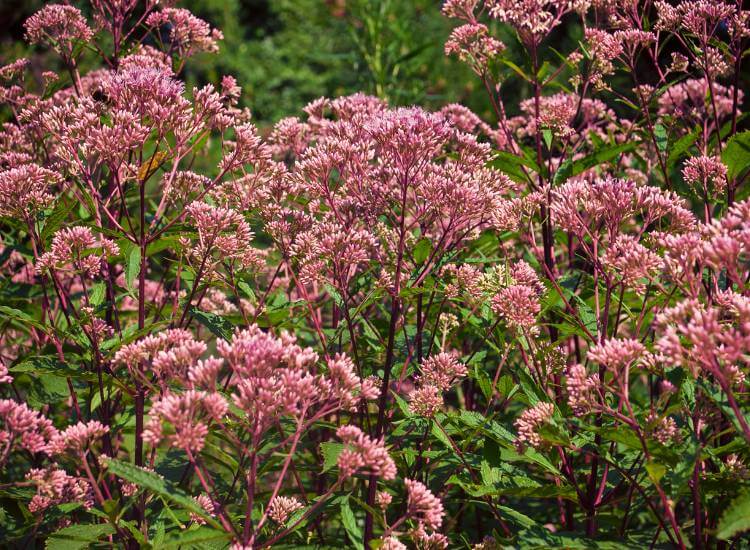
This impressively tall plant is easy to spot, especially when dozens of delighted butterflies are circling its lovely flowers. Though it has ‘weed’ in its name, Joe Pye weed is now a beloved garden plant you’ll find in nurseries across the country.
According to Edible Wild Food, the whole plant is edible, though it doesn’t appear in most foraging guides.
Herbalist Matthew Alfs writes that Joe Pye weed root has historically been used as a diuretic and lithotriptic (used for removing kidney stones) and for other urinary ailments as well as prostate issues and diabetes. Numerous Native American tribes have used it for these purposes, in addition to colds, fevers, and other ailments.
More information on growing and using Joe Pye weed at Commonsense Home.
CRANESBILL/WILD GERANIUM (GERANIUM MACULATUM)
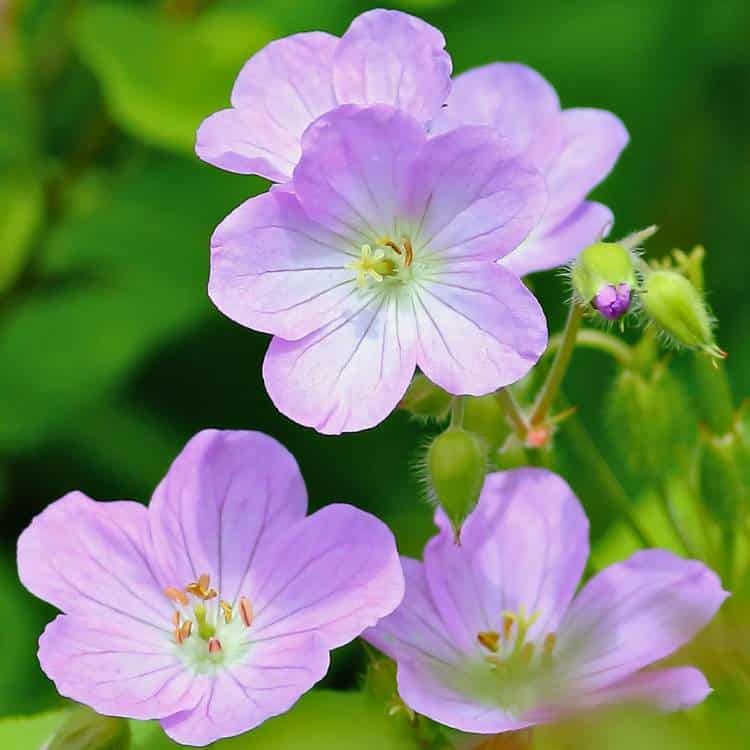
Another plant that wants to completely take over my garden, wild geranium has proven extremely challenging to control. I’m surprised that the extension sources I’ve looked at don’t consider it an invasive plant. It is very pretty, with interesting-looking leaves and cute pink flowers, so if it does colonize your yard, it can work as an herbal groundcover.
It’s one of the first plants to poke out of the soil in spring. Llittle baby geranium plants are everywhere the moment the soil thaws.
If you want to try using wild geranium medicinally, Native Americans have used it for addressing diarrhea and wound healing, among many other uses.
But if it’s in your yard and you’d like to grow anything else, don’t let it go to seed. Clip off those pink flowers while they’re blooming.
COMMON VETCH (VICIA SATIVA)
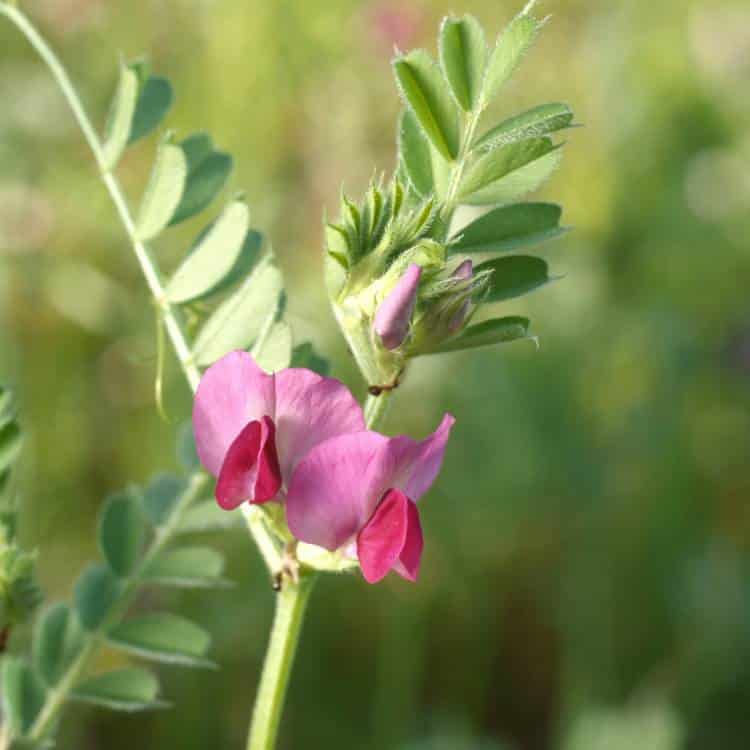
A member of the pea family, common vetch has been a part of the human diet for millennia.
According to Wild Food U.K., the cooked leaves taste like peas and the edible seeds, like many other legumes, must be cooked like dried beans before eating. Their post actually recommends draining and refreshing the cooking water several times. It includes helpful identification information as well.
Be sure to correctly identify common vetch, as a crown vetch (below) is not safe to eat.
NOT SAFE TO CONSUME
CROWN VETCH (CORONILLA VARIA)
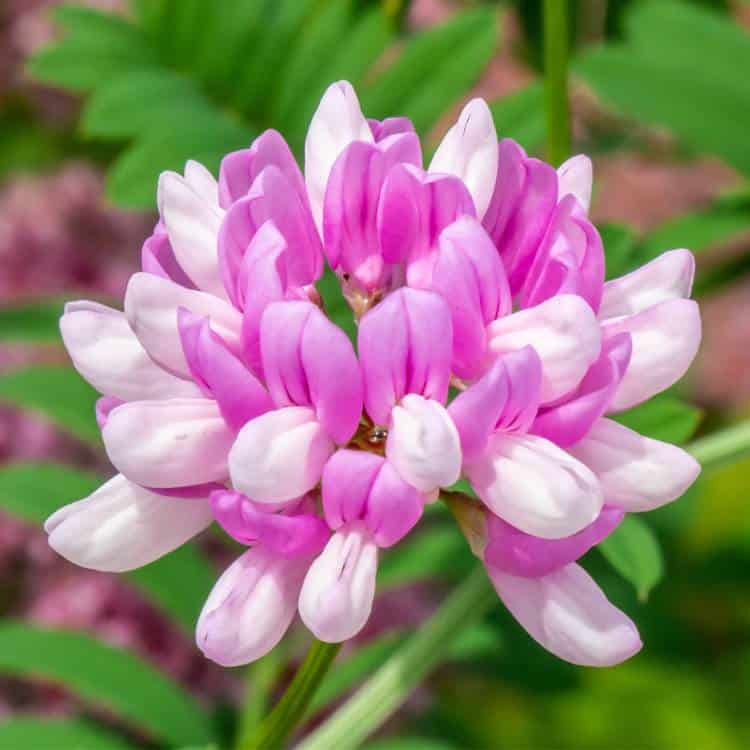
Considered highly toxic, crown vetch is an invasive plant you’ll see growing by roadsides in much of North America.
Here’s more on identifying crown vetch from the Minnesota DNR.
FIELD BINDWEED (CONVULVULUS ARVENSIS)
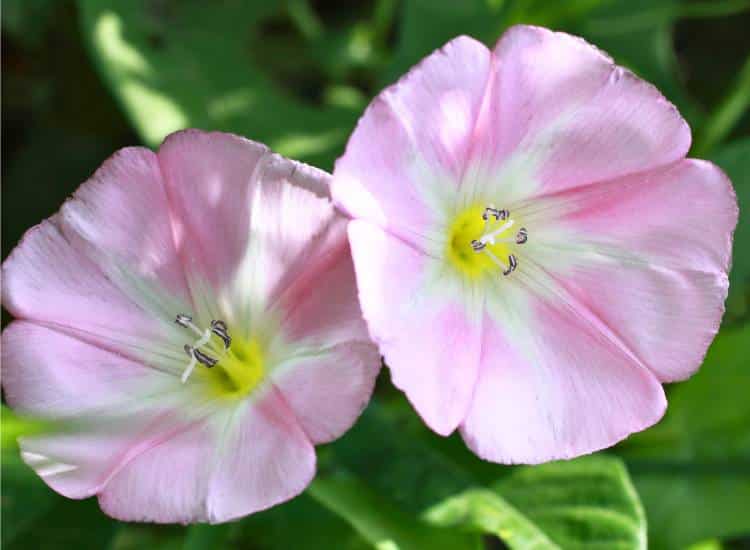
Bindweed’s name indicates why gardeners pull it. This invasive weed wraps itself around whatever it can and is exceptionally hard to get rid of. This is one of the weeds with pink flowers you don’t want in your garden.
This morning glory relative has been used as food by some cultures, but most foragers heed warnings about potential toxicity and leave it alone. Here’s a good discussion of the issue from Eat Weeds.
Love plants? Let the world know with one of our t-shirts for plant peeps!
Other wild plant posts to explore:
- Elderflower Identification
- Purslane Recipes from Around the World
- Foraging Chickweed
- 30+ Lambs Quarter Recipes
Save this info on weeds with pink flowers for later!
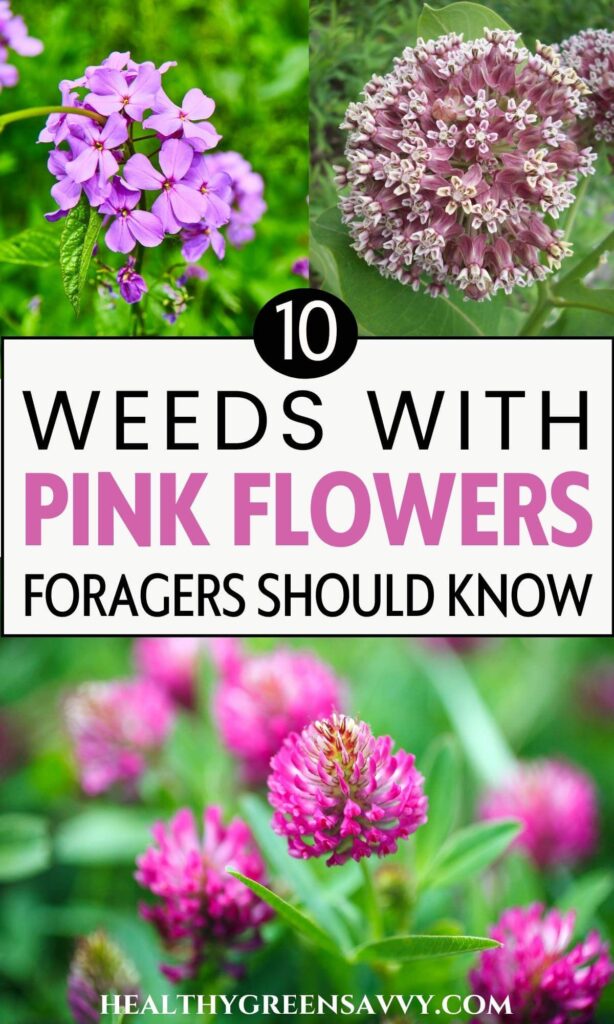
Additional photo credits in cover collage and pin: druvo, Nicholas J Klein, Trek13
Disclaimers: Though HealthyGreenSavvy and EcoSavvy Writing LLC always aim to provide thorough and accurate information, we assume no liability or responsibility for any consequences, health issues, or symptoms that arise from ingesting or touching any plant described on this website. It is always the reader’s responsibility to ensure accurate plant identification and use multiple reputable sources to confirm. If you have any doubts about the identification of any plant, do not eat it.

Susannah is a proud garden geek and energy nerd who loves healthy food and natural remedies. Her work has appeared in Mother Earth Living, Ensia, Northern Gardener, Sierra, and on numerous websites. Her first book, Everything Elderberry, released in September 2020 and has been a #1 new release in holistic medicine, naturopathy, herb gardening, and other categories. Find out more and grab your copy here.
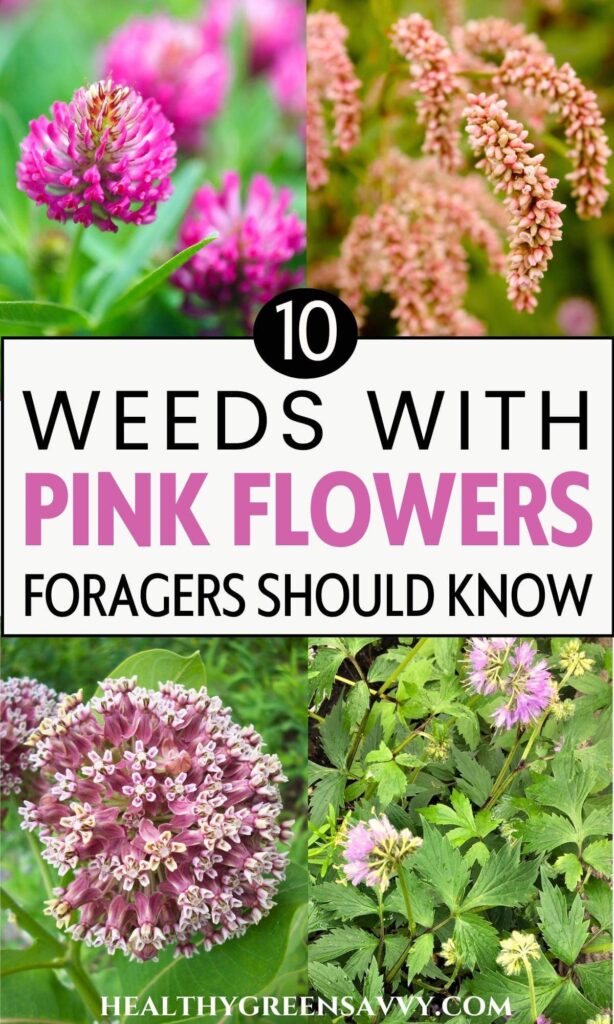
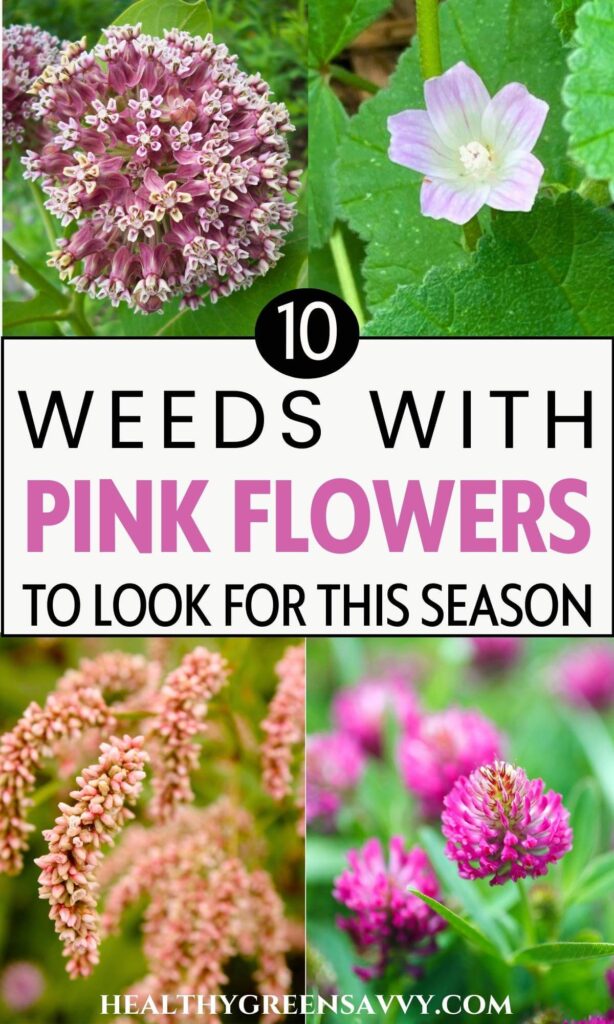
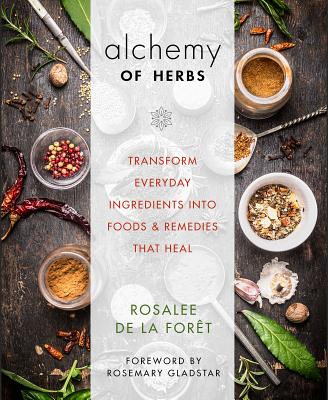
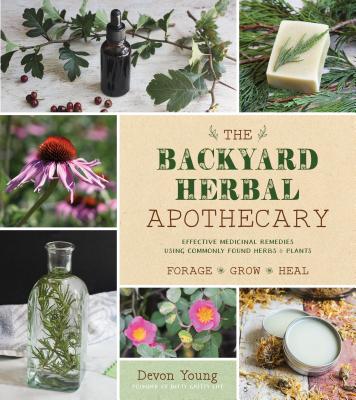

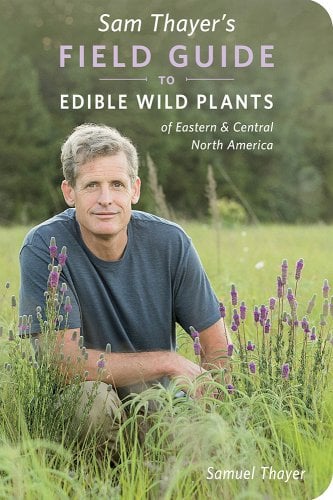
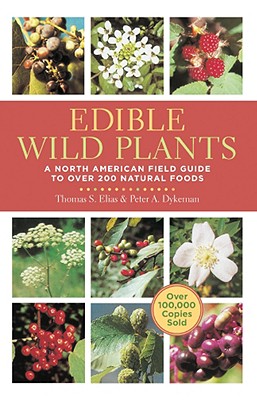
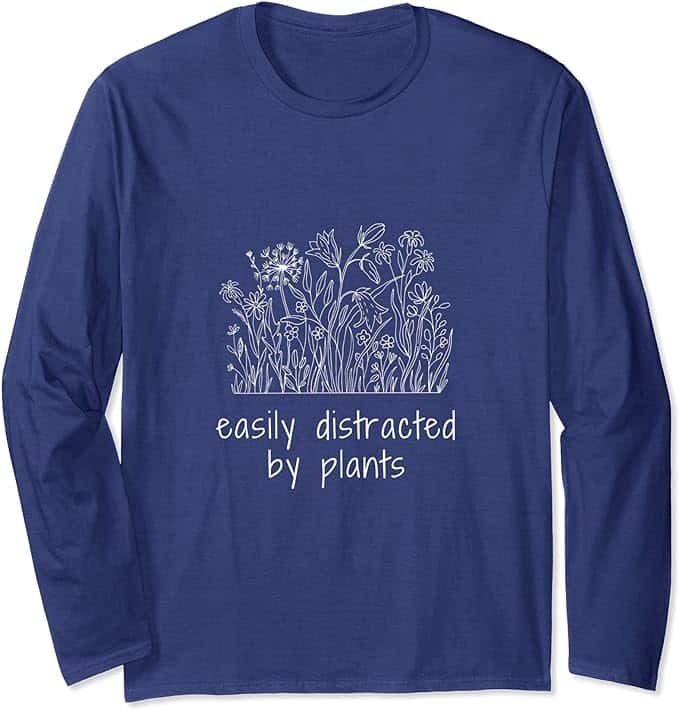
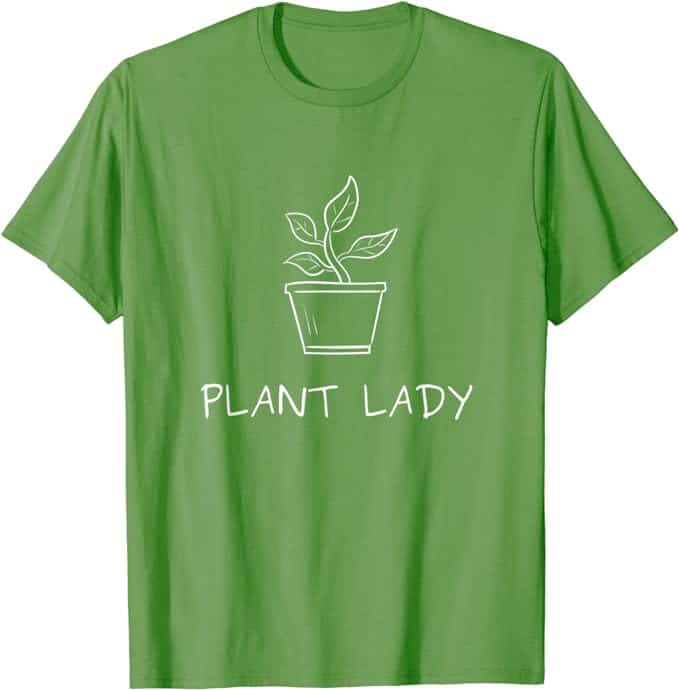
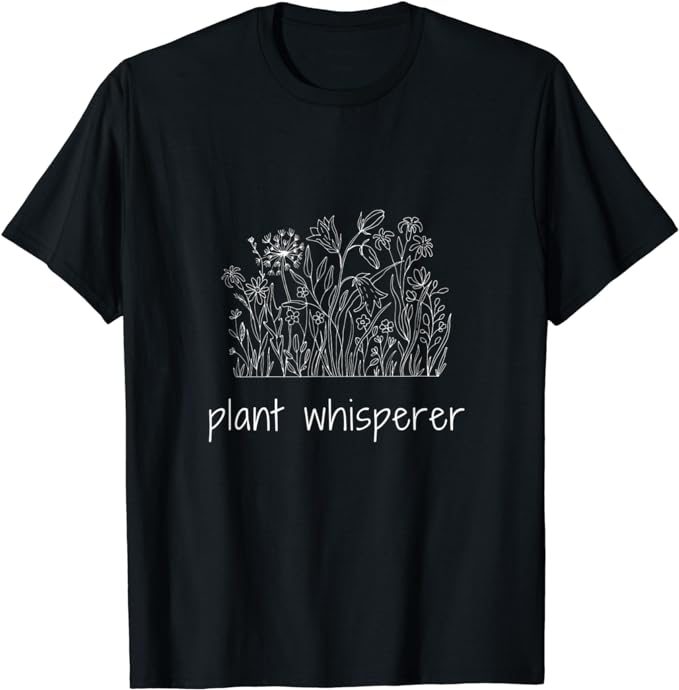
 Hi, I'm Susannah, a garden geek, energy nerd, and fan of healthy food and natural remedies. Need some simple, practical solutions for living healthier and greener? You've come to the right place! More about me and my green projects
Hi, I'm Susannah, a garden geek, energy nerd, and fan of healthy food and natural remedies. Need some simple, practical solutions for living healthier and greener? You've come to the right place! More about me and my green projects
Leave a Reply